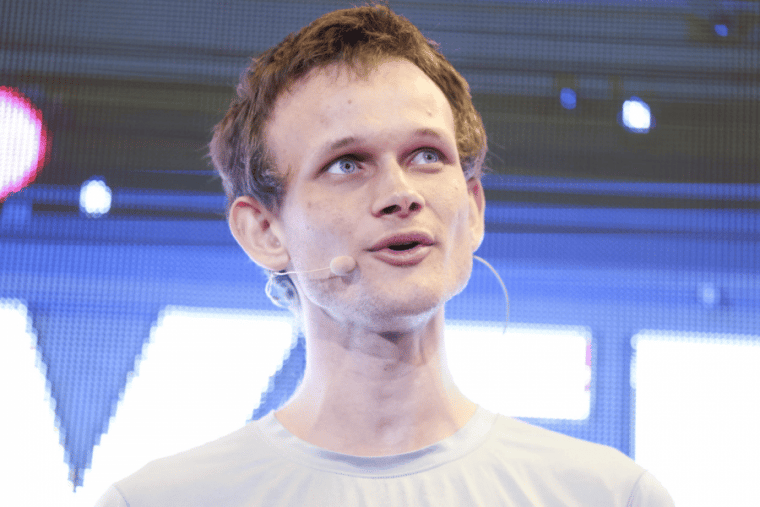
With the merge fast approaching this September, the debate of Proof of Work versus Proof of Stake has never been stronger, and Vitalik has shared some thoughts on where crypto is going, as well as the potential limitations of Bitcoin’s current consensus model.
Vitalik: crypto could become “The Linux of Finance”
Vitalik’s comments on the state of the crypto industry always draw attention, not least because people are interested to see what the founder of Ethereum thinks about the pricing of certain assets going forward.
His recent comments over how cryptocurrency could become the “Linux of finance” have drawn some attention.
Buterin explained that over the next 20 years, from now to 2042, there are a whole range of issues that we, as a society, will be forced to contend with.
The future success or failure of cryptocurrencies largely depends upon how these individual issues are dealt with, and how they affect the larger picture.
“If, in 2040, cryptocurrency has made its way robustly into a few niches: it replaces gold’s store of value component, it becomes a sort of ‘Linux of finance’, an always-available alternative financial layer that ends up being the backend of really important stuff but doesn’t quite take over from the mainstream, then the chance that it’s going to either disappear or take over the world completely in 2042 is going to be much smaller”
The problem with Bitcoin’s capped supply
One of the main concerns that the Ethereum community often voices about Bitcoin’s long-term security is that there are limits to what can be achieved with Proof of Work.
Over the longer term, Vitalik believes that the declining block rewards will not be sufficient in order to sustain Bitcoin long term, since the majority of revenue will come fees and there aren’t enough fees being generated to scale such a large security budget.
In order for Bitcoin to be secure, the blockchain must be able to resist a 51% attack. The higher the total hash rate of Bitcoin, the harder it is to perform a 51% attack on the network.
Currently, miners are incentivised to mine with block rewards, which comprise newly-mined Bitcoin and transaction fees generated in that block. At the moment, there are 6.25 new BTC mined per block.
Every halving (every four years) the number of Bitcoin that are mined per block is cut in half, meaning that within a few decades the inflation rate will be extremely low, but also miners will be competing over far fewer Bitcoin.
This means that miners need to be generating a lot of revenue from fees in order to remain profitable.
Not only this, but for the Bitcoin network to remain secure, the hash rate must rise with price: if the price comes to far exceed the hash rate this poses a problem, as the hash rate is effectively Bitcoin’s security budget.
Is Vitalik right about PoW? Can this problem be addressed?
Even at current levels, it would be extremely difficult for any one party to gain enough of the hash rate to perform a 51% attack, given the high costs associated with setting up Bitcoin mining farms.
Vitalik’s argument that Bitcoin is fundamentally insecure and would be safer on Proof of Stake, or at least a hybrid between Proof of Work and Proof of Stake, is something that has yet to be proven true.
Even though innovations like the Lightning Network have meant that the mempool is often quite empty and fees generated have not risen much in the last few years, the hash rate does continue to rise.
Despite the China ban on Bitcoin mining in 2021, political uncertainty, and Ethereans bashing Proof of Work, and a major collapse in all markets, the Bitcoin hash rate continues to break ATHs, meaning that the network is more secure than ever.
Moreover, as Bitcoin becomes more established and mining becomes a more fundamental part of business models for energy companies, the future marginal cost of adding hash rate for a lot of industries is close to zero.
For countries like El Salvador, which already produce far more energy than they consume, the marginal cost of using geothermal energy to mine further Bitcoin is close to nothing.
When one compares the cost of mining Bitcoin in different countries around the world, it is clear the hash rate can continue to rise substantially as miners seek to arbitrage energy prices in different jurisdictions.
The price can drop a lot lower before it becomes unprofitable to mine, and there is also the difficulty adjustment to ensure that the network remains secure.
However, the issue of lower revenue for miners could be a problem over the coming decades – even with the price appreciating exponentially, the lack of fee revenue generated may cause hash rate to slow somewhat.
Other Proof of Work blockchains, such as Monero, have planned for this since inception: in the case of XMR, there is a flat rate of new XMR that can be mined per block ad infinitum, this means that Monero miners have a lot more stability in forecasting future mining requirements, and will likely be able to continue mining profitably for far longer.
Vitalik does have an interest in Proof of Stake succeeding over Proof of Work, given that it has been the trajectory of Ethereum to switch almost since inception. Now, in September, Ethereum will fully switch to Proof of Stake.
Tamadoge - The Play to Earn Dogecoin
- '10x - 50x Potential' - CNBC Report
- Deflationary, Low Supply - 2 Billion
- Listed on Bybit, OKX, Bitmart, LBank, MEXC, Uniswap
- Move to Earn, Metaverse Integration on Roadmap
- NFT Doge Pets - Potential for Mass Adoption